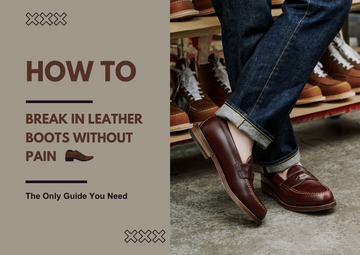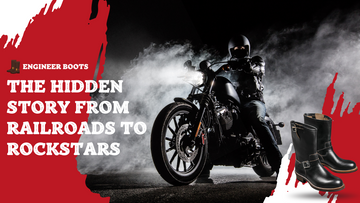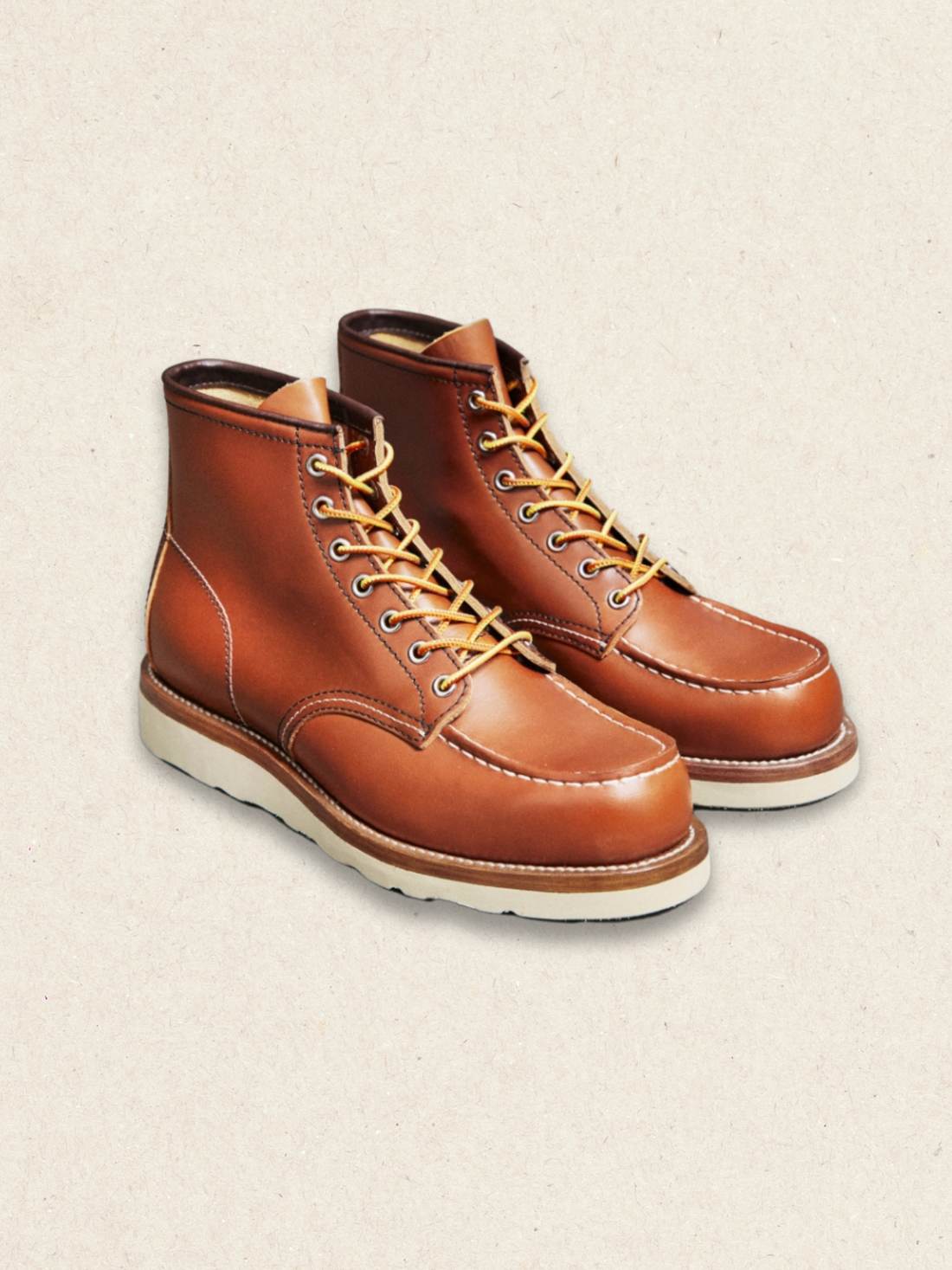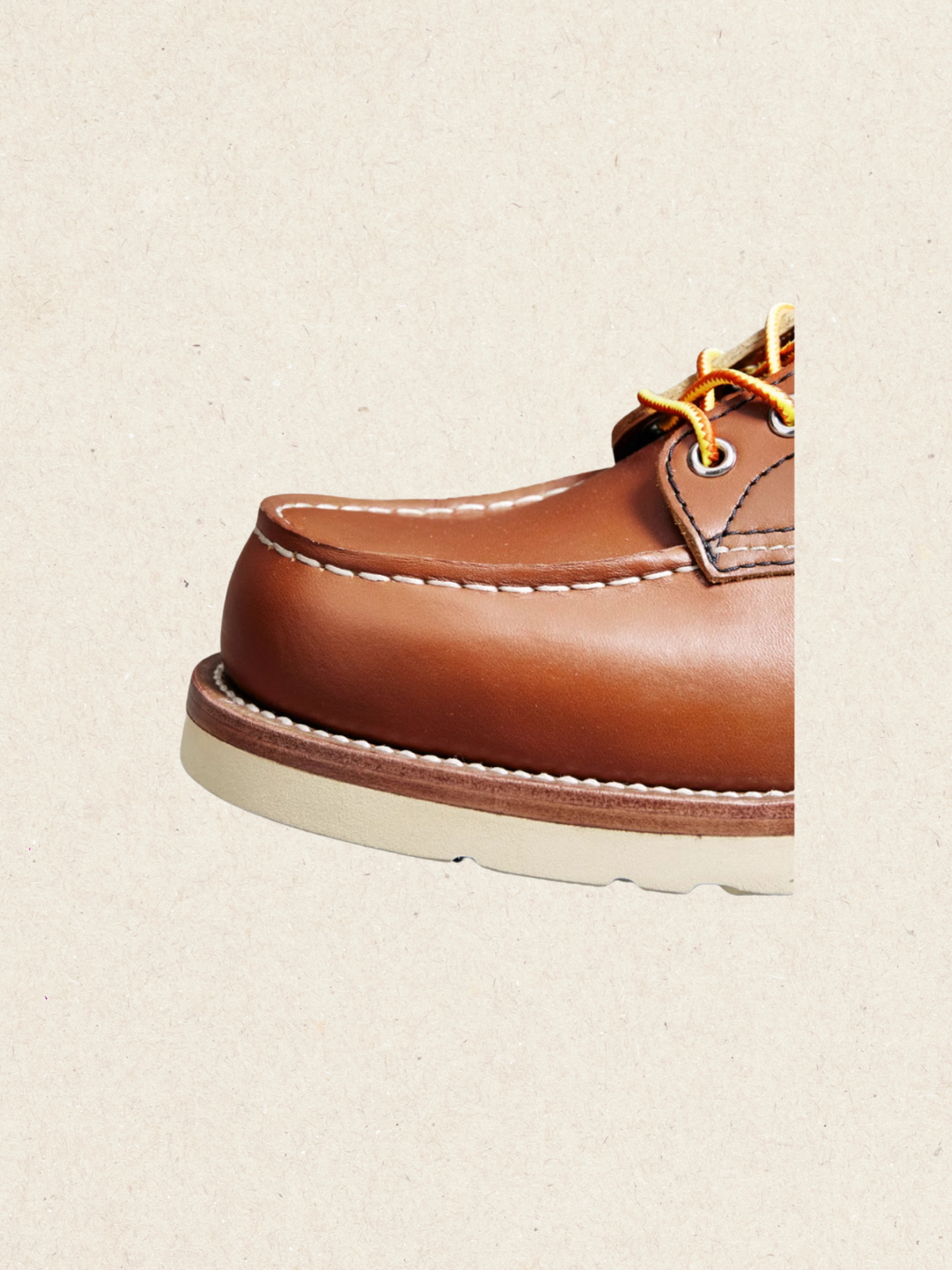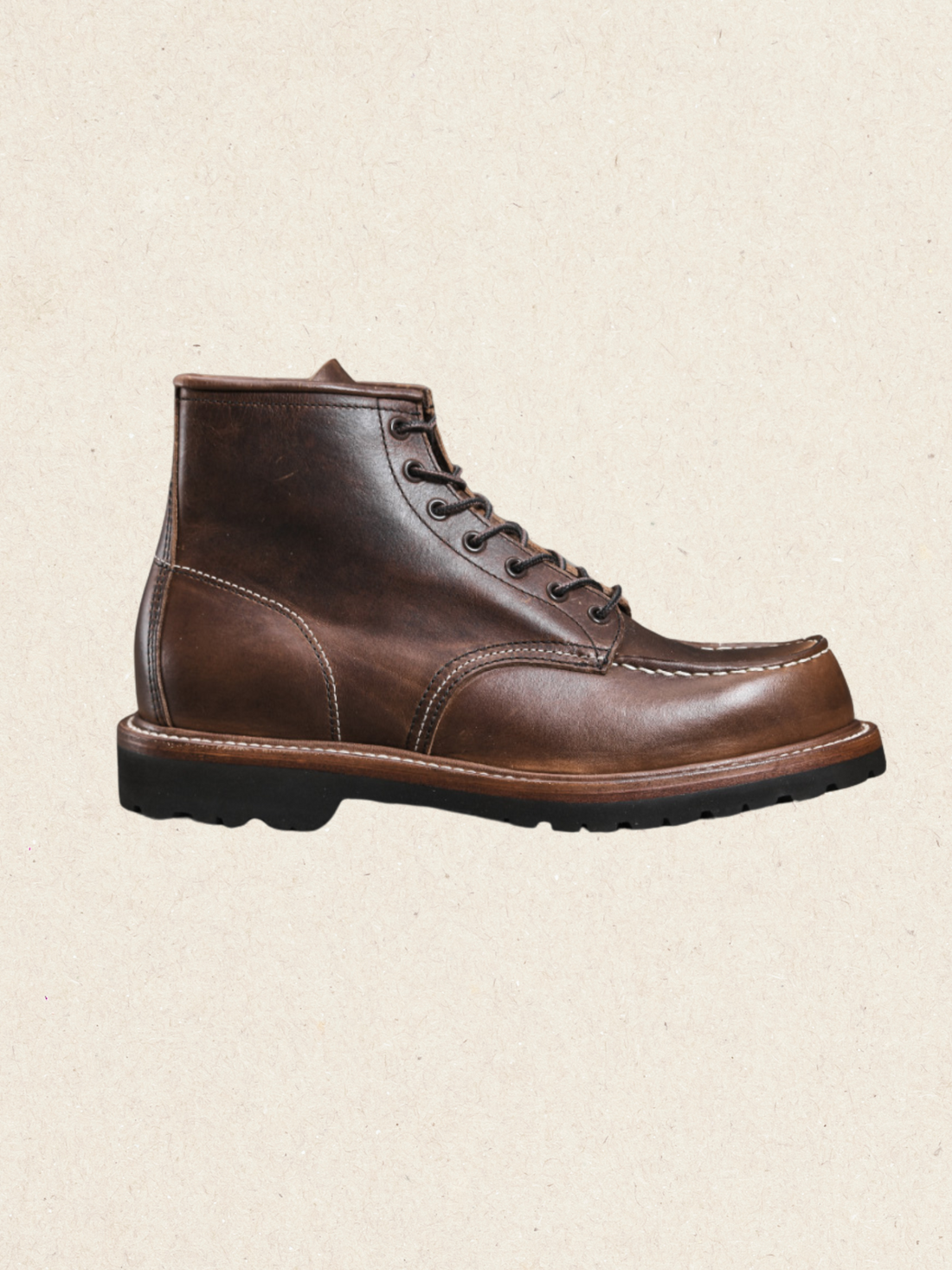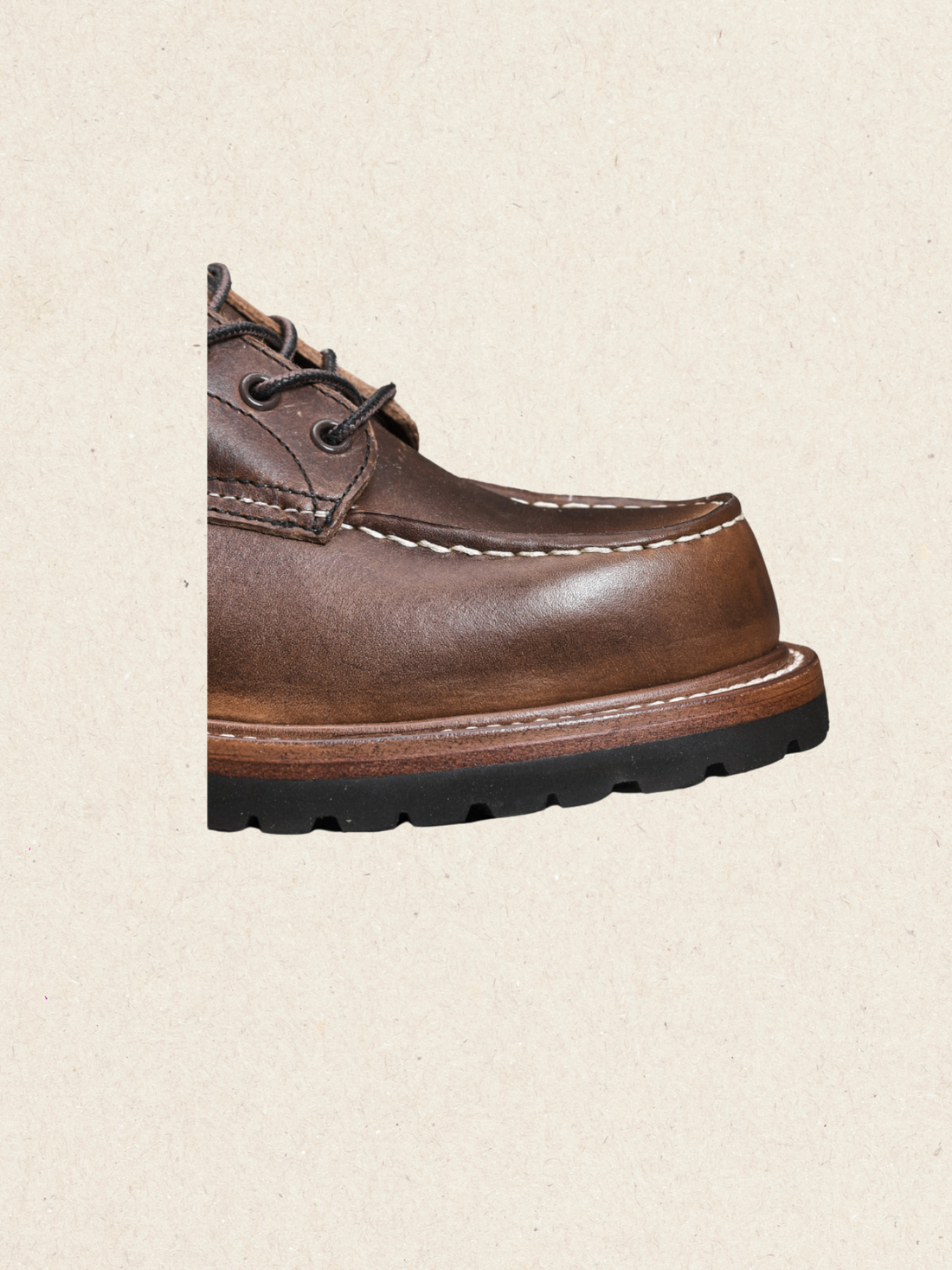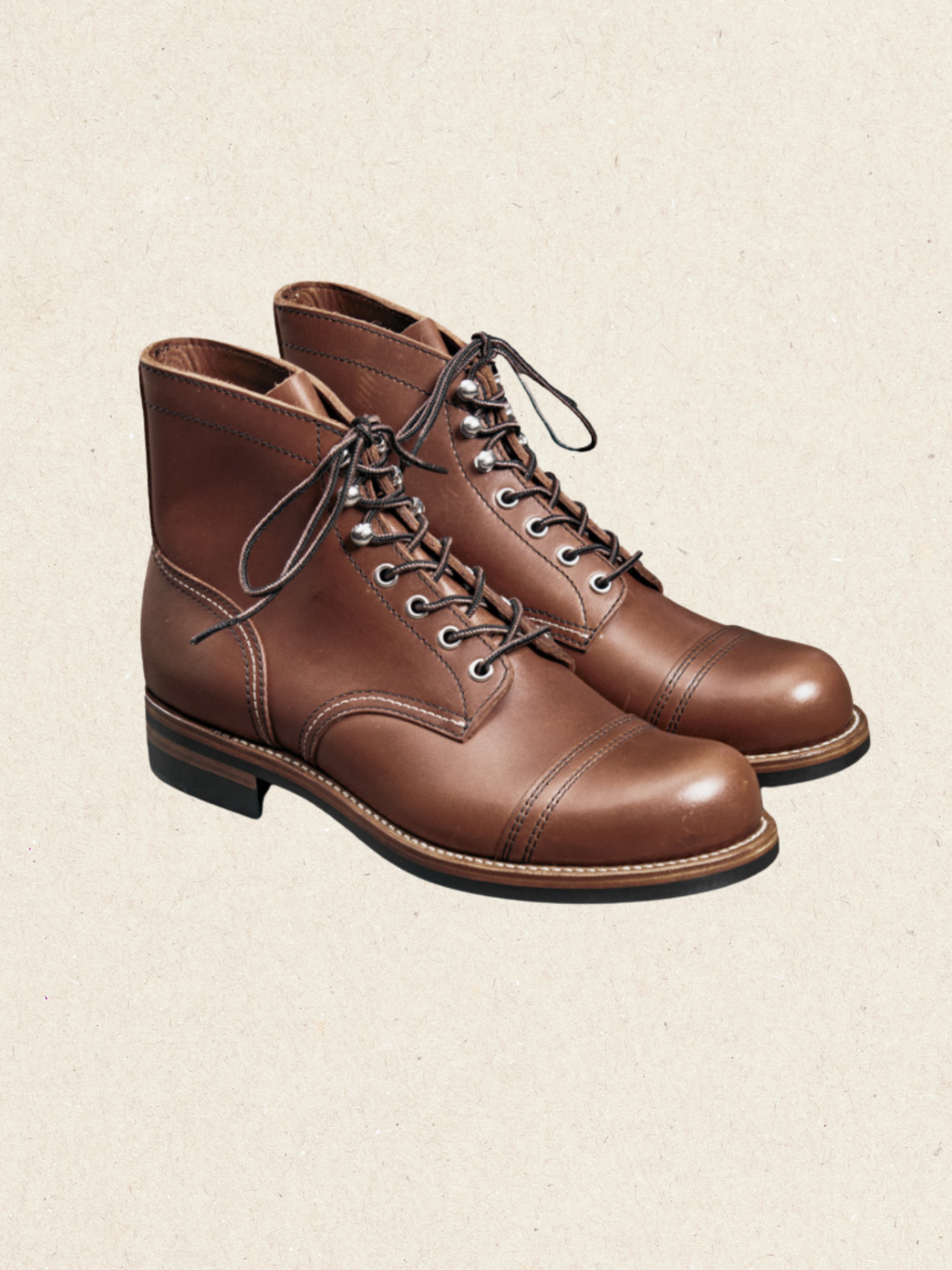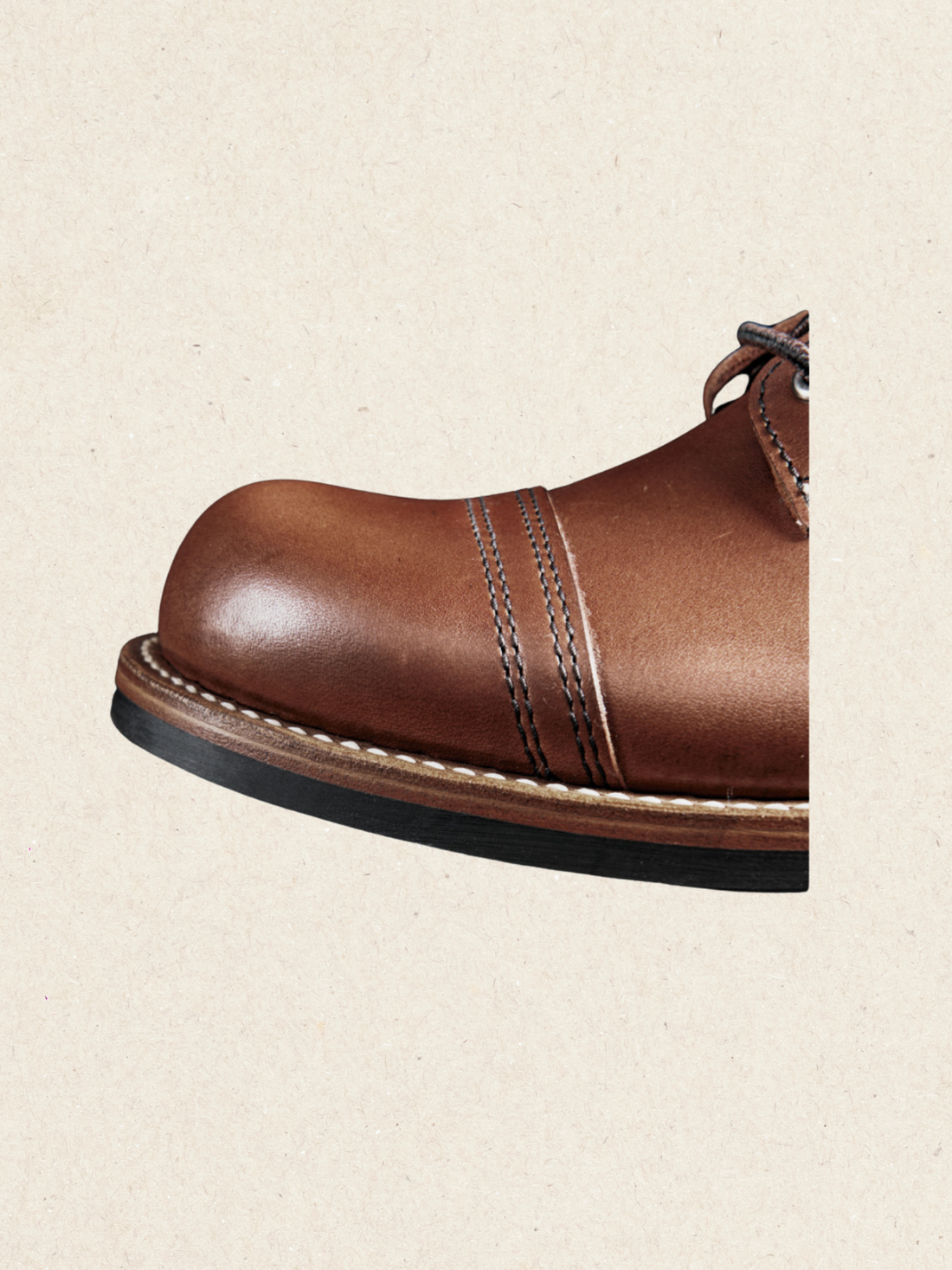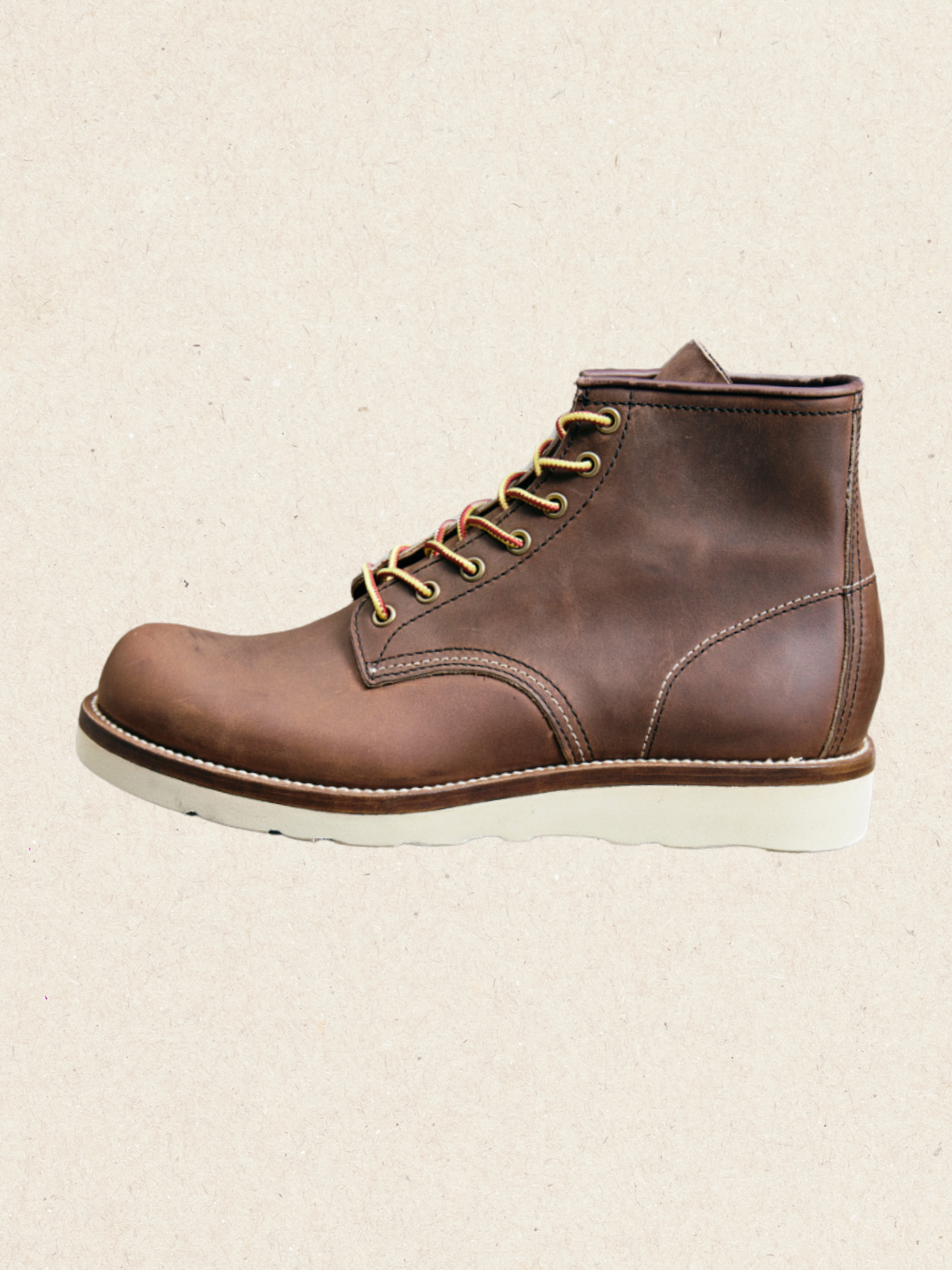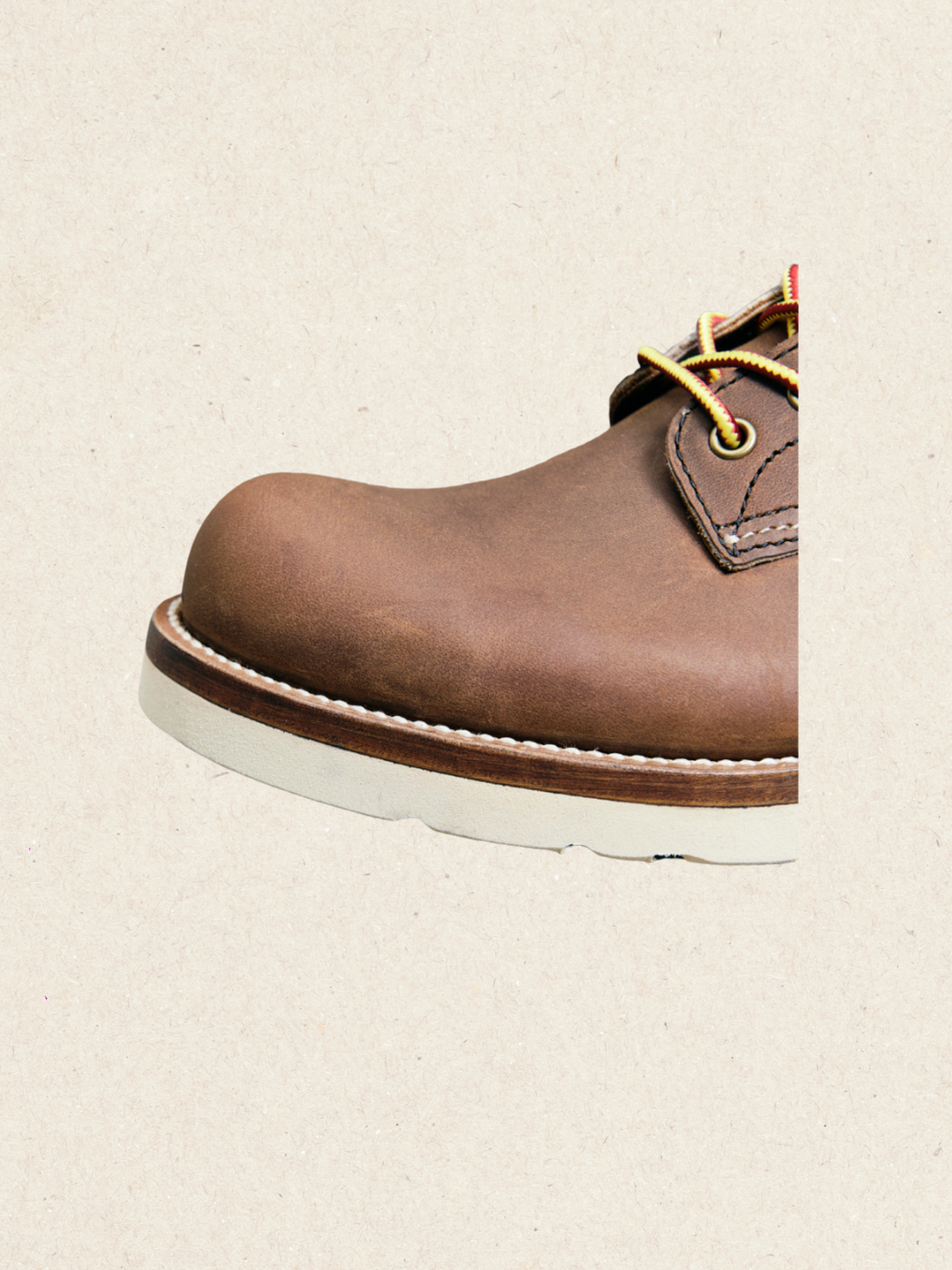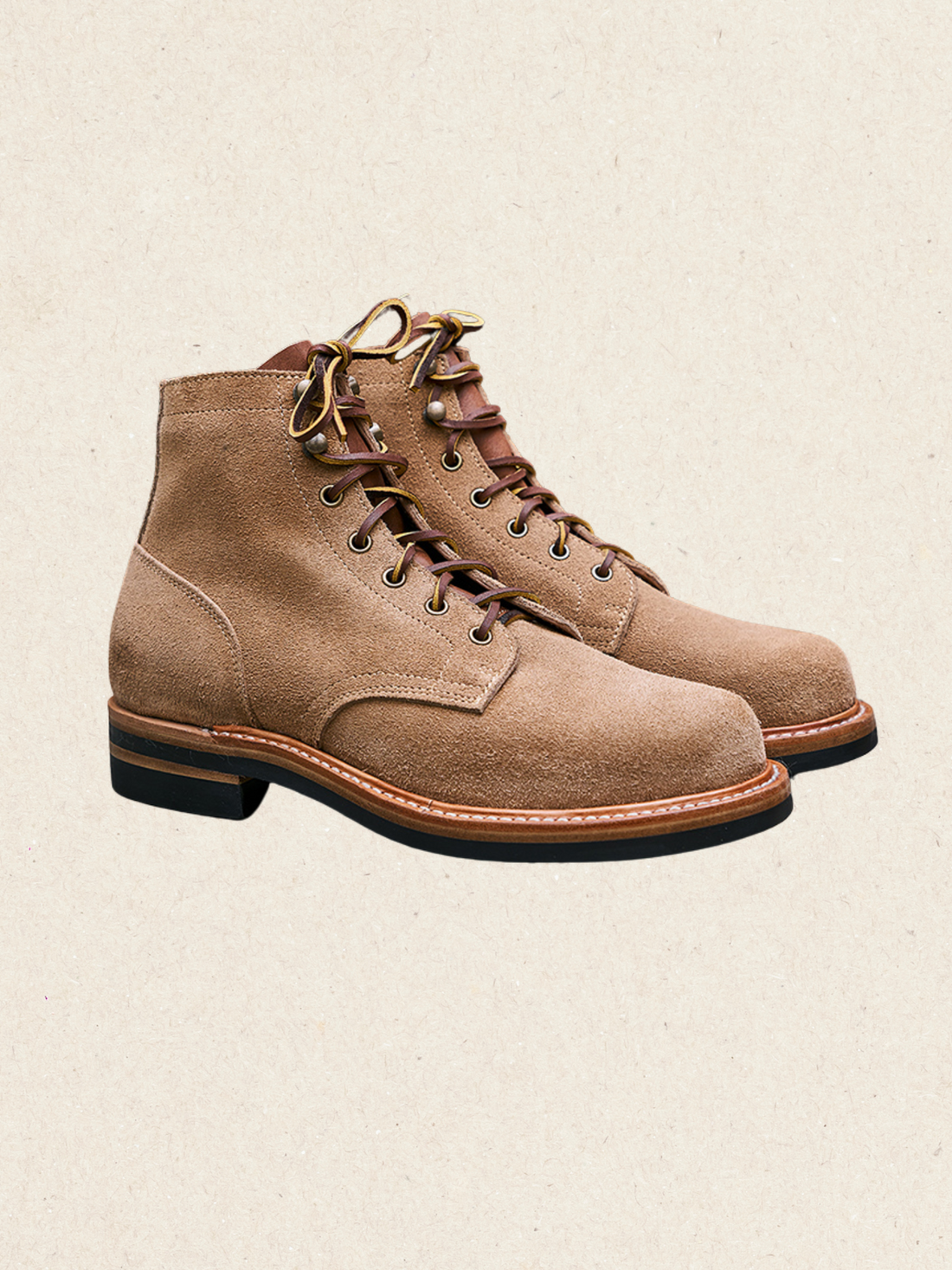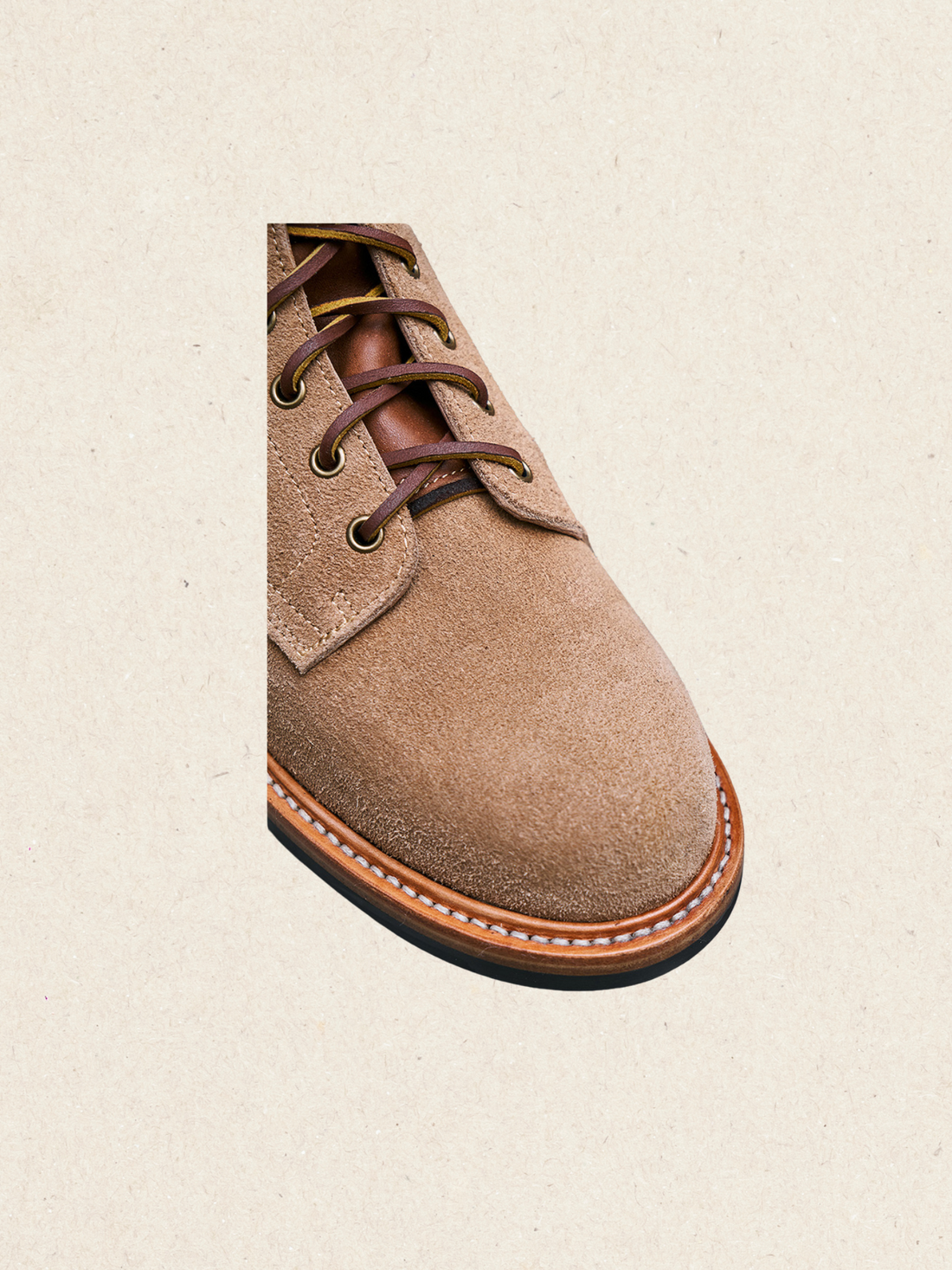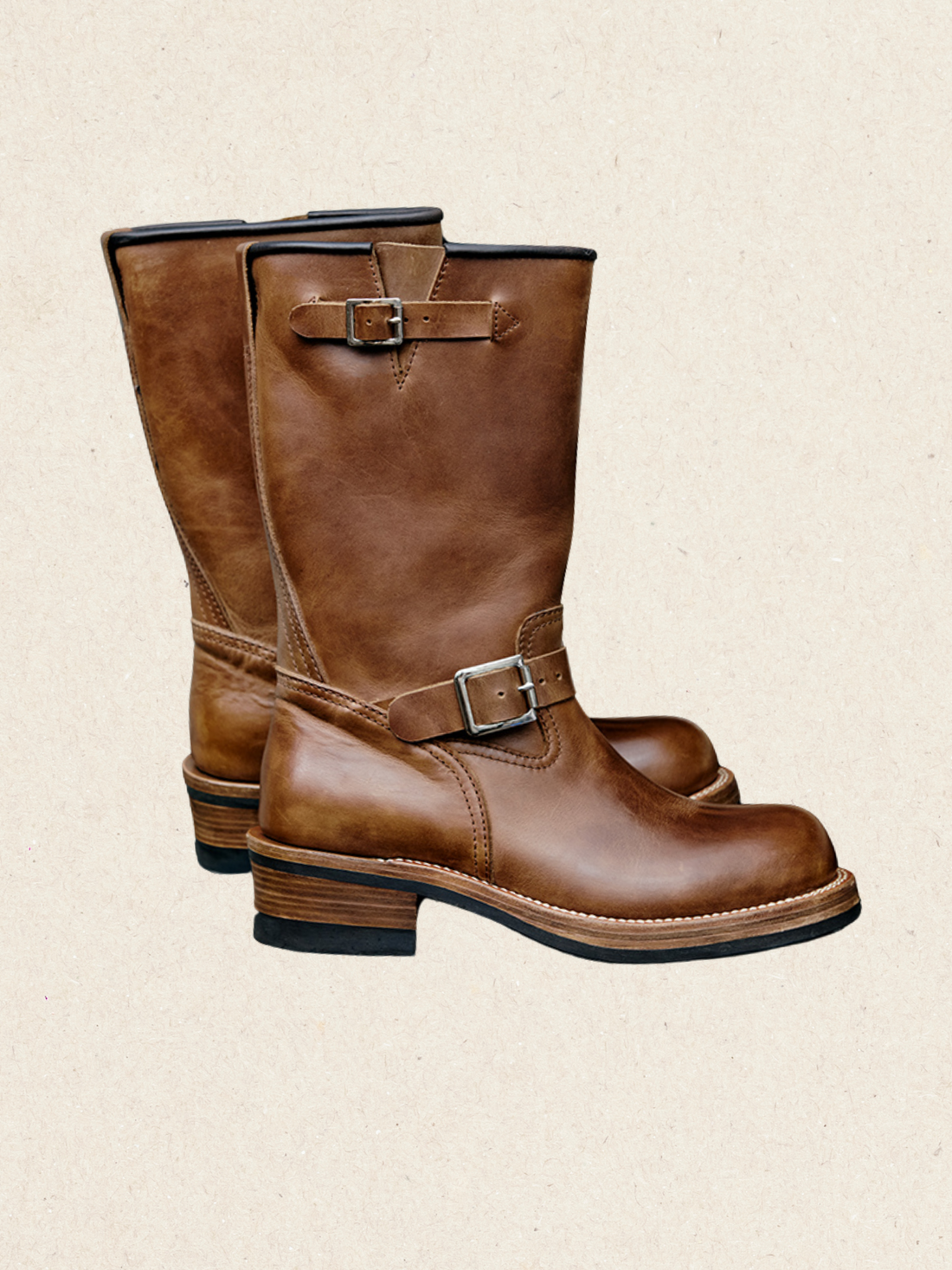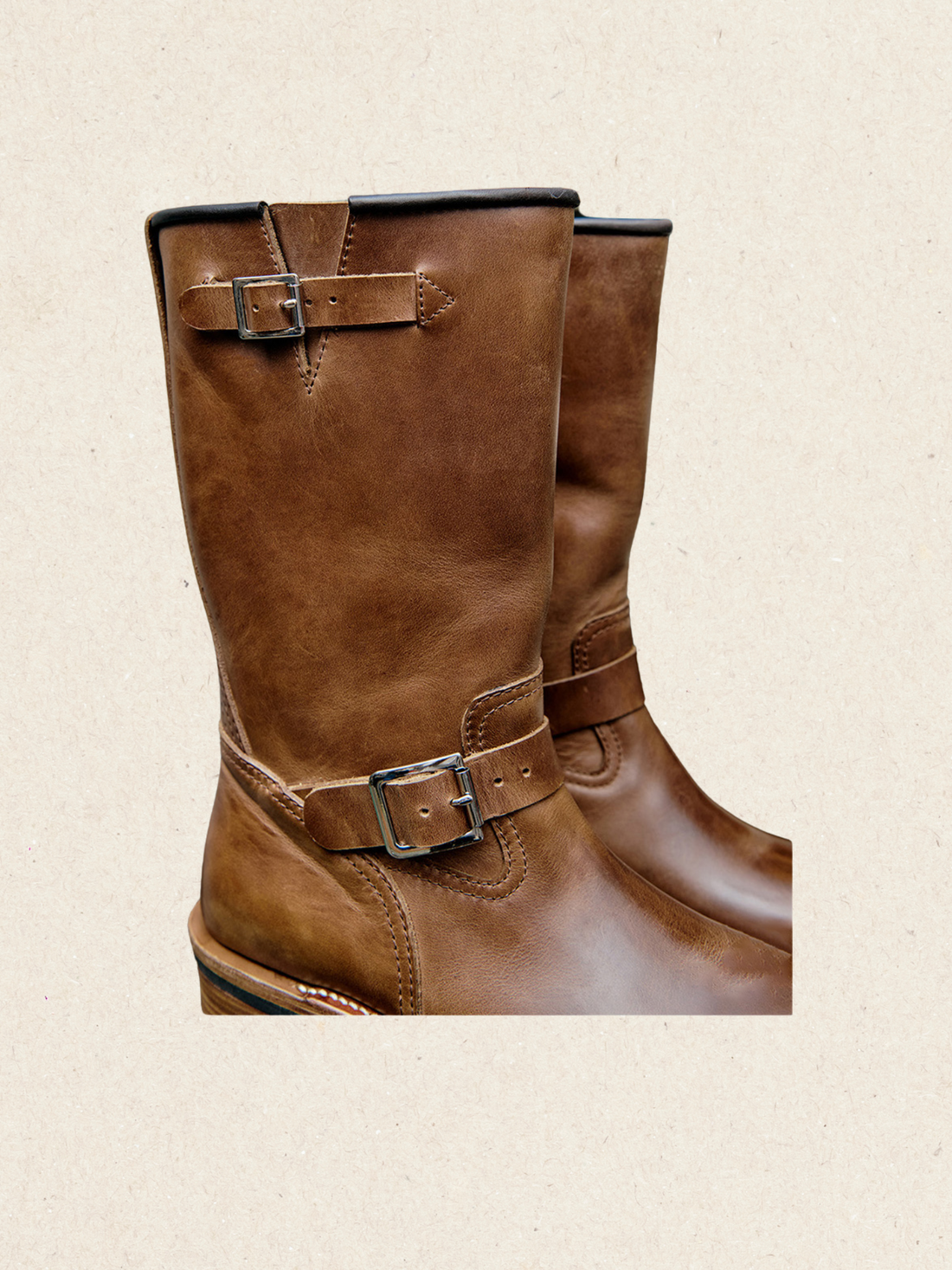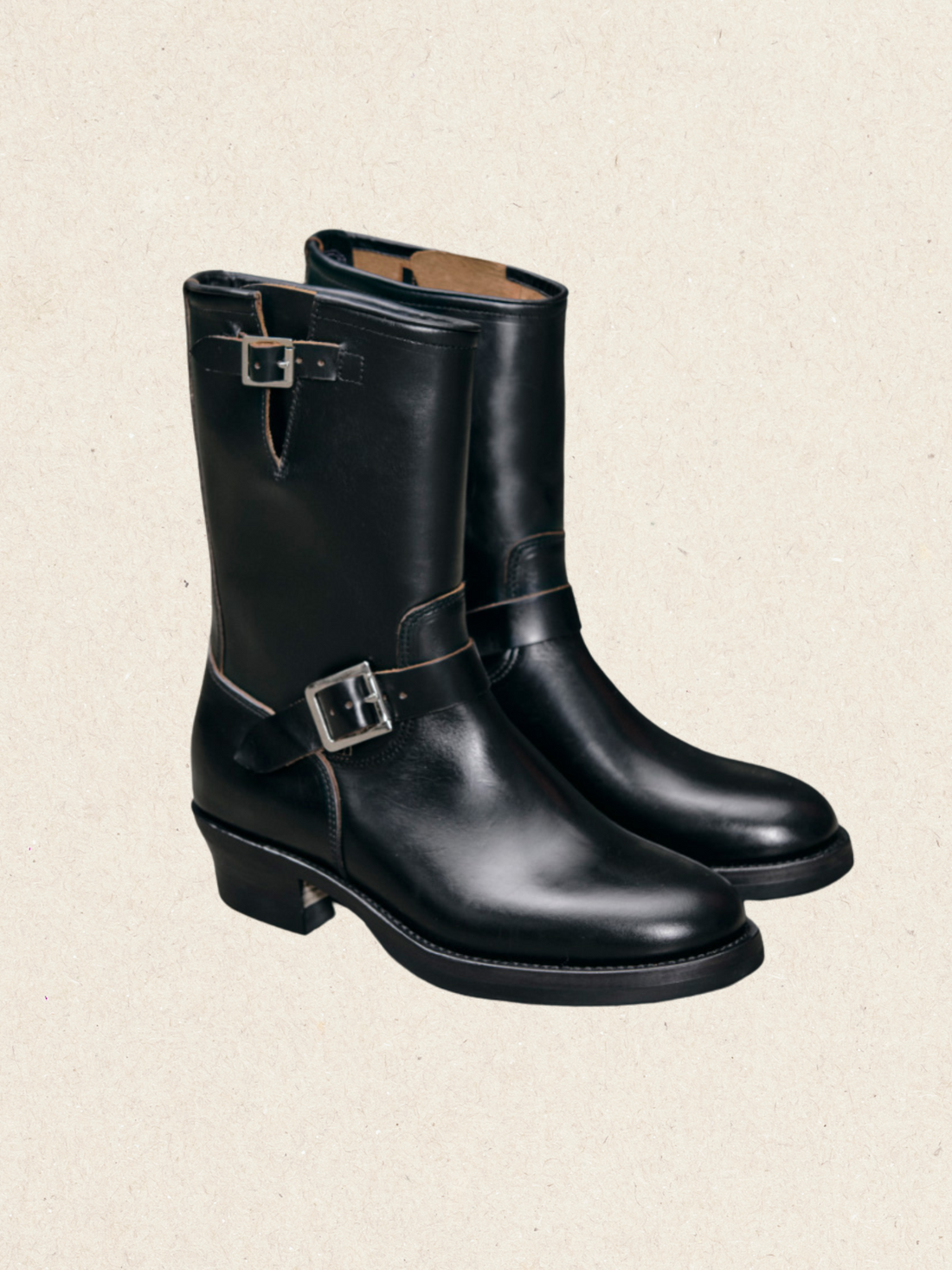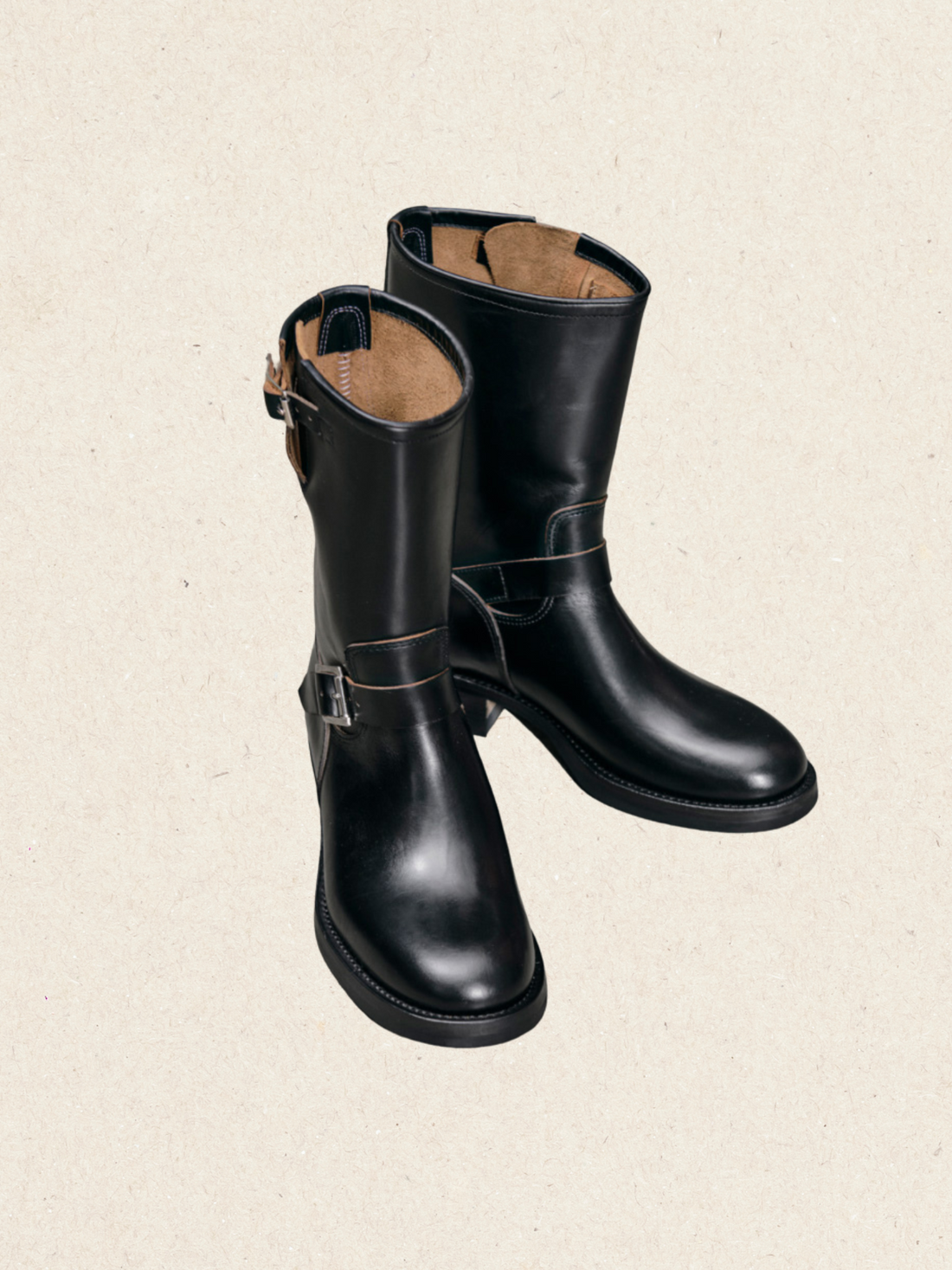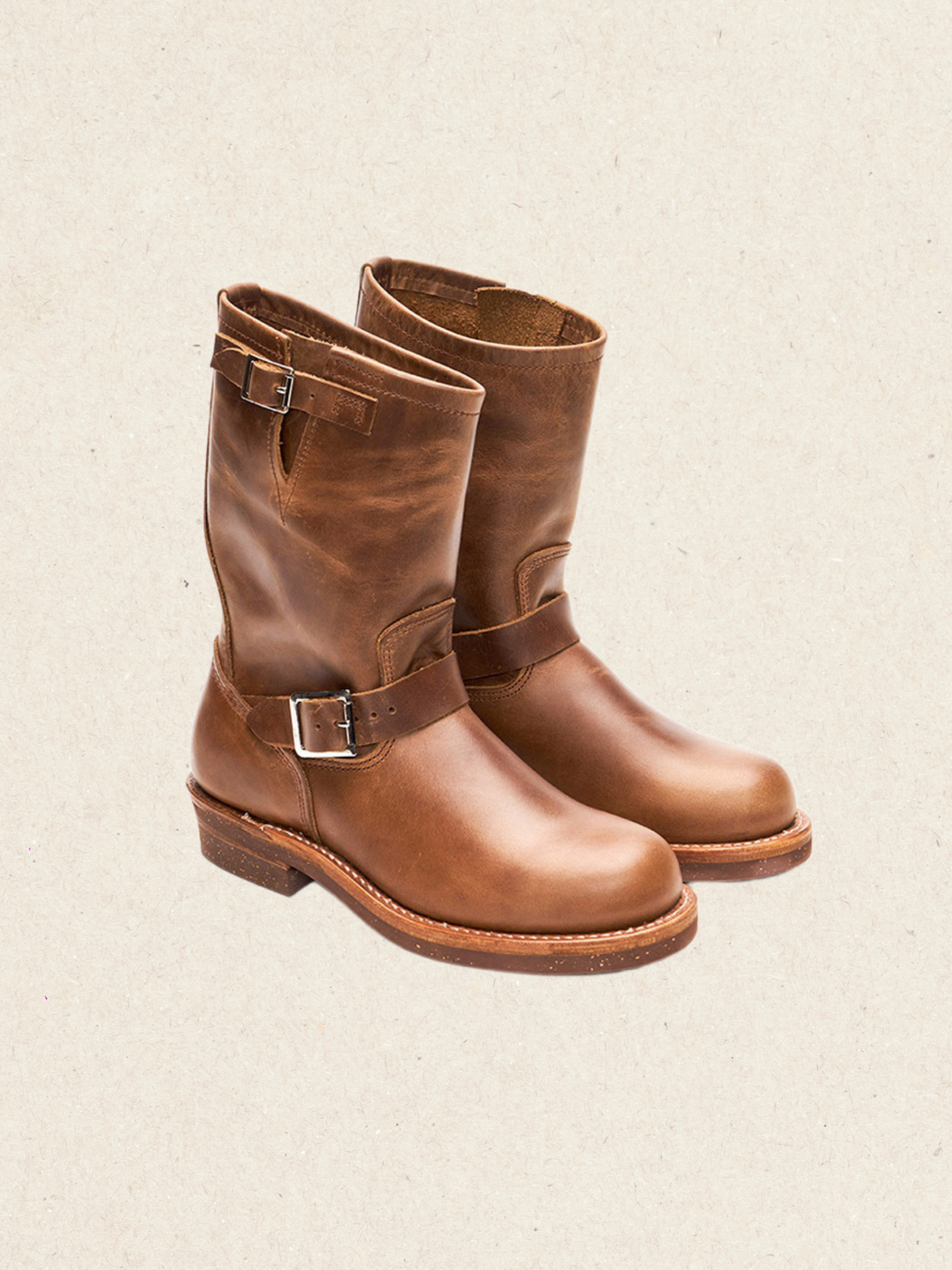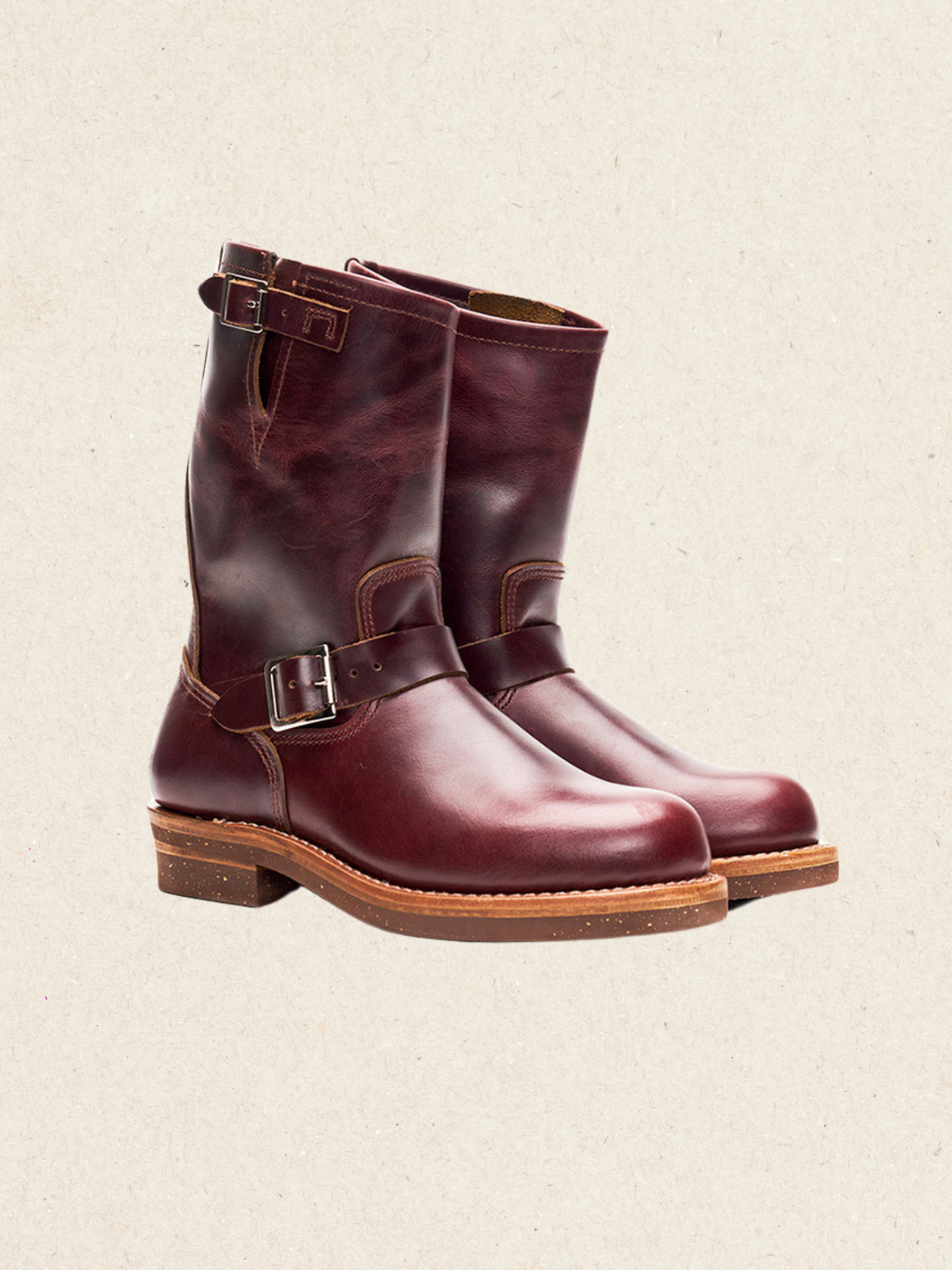Introduction: Why Breaking In Leather Boots Is Crucial
Buying a new pair of leather boots—whether they’re rugged men work boots, sleek leather engineer boots, or refined dress shoes(loafers or oxford shoes)—is exciting. But many people are caught off guard when that beautiful new pair feels uncomfortably stiff or even painful at first. The reality? High-quality leather boots almost always require a break-in period.

Breaking in your boots isn’t just about comfort; it directly impacts how well they fit, how they mold to your feet, and how long they’ll last. Skipping or mishandling this phase can lead to sore feet, blisters, or even long-term foot issues. Common mistakes like forcing long wears too early, wearing the wrong type of socks, or ignoring pressure points often make the process worse.
In this guide, we’ll walk you through how to break in leather boots without pain, while helping you avoid costly missteps. Whether you're dealing with stiff new work boots or tight-fitting dress shoes, the tips ahead will make your first wears smooth—and your boots a long-term companion.
Why Leather Boots Feel Stiff at First
If your new leather boots feel stiff or tight straight out of the box, you’re not alone. It’s actually a sign of quality.
Natural leather—especially full-grain or vegetable-tanned leather—is naturally rigid when new. Unlike synthetic materials, real leather takes time to soften and conform to the shape of your foot. That initial stiffness is due to the dense, durable fiber structure that gives leather its longevity.

This is especially true for Moc Toe work boots and moto engineer boots, which are built for toughness and long-term wear. These styles prioritize protection and structure over immediate softness. Similarly, dress shoes are designed to retain their elegant silhouette, which often means firmer construction around the toe box and heel.
Important: Many people assume stiff leather means the boots are too small and end up sizing up unnecessarily. But that extra space can actually lead to heel slippage, poor support, and long-term discomfort. Instead of sizing up, it’s better to allow time for the leather to break in and mold to your feet—that’s when the real comfort begins.
Understanding this natural stiffness helps set the right expectations: your boots aren’t “too small”—they just need the proper break-in process to unlock their true comfort.
How Long Does It Usually Take to Break in Boots?
There’s no one-size-fits-all answer to how long it takes to break in leather boots—but having a general timeline helps set realistic expectations.
-
Work boots typically require 5 to 10 full wears before the leather starts to soften and flex.
-
Engineer boots, due to their high shaft and structured design, may take up to two weeks to feel comfortable.
-
Dress shoes made with softer leathers often need only 2–3 wears.

Several factors influence the break-in speed—some accelerate the process, while others slow it down:
✅ Factors that speed up the break-in process:
-
Softer leather types, such as calfskin or nubuck
-
Unlined interiors or thin leather linings
-
Wearing thick or cushioned socks during initial wears

-
Wearing the boots for shorter, frequent sessions (rather than long all-day wear)
-
Moderate walking activity during break-in, not standing still
❌ Factors that prolong the break-in period:
-
Full-grain or vegetable-tanned leather, which is denser and stiffer
-
Stiff internal reinforcements in the toe box or heel
-
Wearing thin dress socks from the start
-
Infrequent wear (e.g., once a week)
-
High instep or wide feet trying to conform into a narrow last

⚠️ Important: Discomfort during break-in is normal—but sharp pain, numbness, or consistent heel slippage are red flags. If your boots still feel unbearable after multiple wears, it may not be a break-in issue—it could be the wrong size or last shape for your foot.
Step-by-Step: How to Break In Leather Boots Comfortably
Breaking in leather boots doesn’t have to mean suffering through blisters and sore feet. With the right steps, you can ease the process and let the leather conform naturally to your foot shape—without damage or discomfort.
🔹 A. Wear Them at Home First
Start slow. Wear your new boots indoors for 30–60 minutes a day during the first few days. This controlled environment gives the leather time to begin softening without the added pressure of a full day outside.

Walk naturally around the house to flex the leather gently, especially at the ball of the foot and ankle. Avoid standing still too long—movement encourages the leather to adapt.
🔹 B. Use Boot Trees After Each Wear
After wearing your boots, insert cedar boot trees to help maintain their shape and wick away moisture. They also support the leather as it relaxes, preventing unwanted creasing or collapse in key areas like the vamp.

🔹 C. Apply Leather Conditioner
A high-quality leather conditioner helps soften stiff leather fibers and speeds up the break-in process. Use a small amount and apply evenly with a soft cloth after a light wear session.
Avoid over-conditioning—once every few wears is enough during the break-in period.
🔹 D. Try Thick or Double Socks
Wearing thicker socks or even two pairs can add gentle pressure in tight areas like the toe box or sides, promoting subtle stretch. This is especially helpful for full-grain work boots or narrow lasts.
However, avoid doing this for long hours at first. Start with short sessions and gradually build up.

🔹 E. Use Targeted Stretching (Optional)
If certain areas feel especially snug (like the instep or forefoot), try boot stretchers or a leather stretching spray. These tools apply focused pressure to stretch specific zones without deforming the overall shape.
✅ Pro Tip: Focus stretching on width or instep—not the heel or ankle, which need to remain secure for long-term support.
What Not to Do When Breaking in Boots
Breaking in leather boots takes patience—but it’s just as important to avoid common mistakes that can cause damage or prolong discomfort.
-
Don’t soak your boots in water. Despite popular myths, saturating leather can dry it out, cause warping, and lead to cracking.
-
Don’t force long wears right away. Wearing boots for hours on end before they’re ready can cause painful blisters and slow the break-in process.
-
Don’t apply direct heat. Using hair dryers, heaters, or open flames to soften leather can dry it out and cause irreversible cracks.

-
Don’t assume all pain is normal. Sharp or persistent pain is a warning sign your boots may not fit properly or that your foot needs a different last or size.
Avoiding these pitfalls will help you break in your boots safely and comfortably, setting you up for years of happy wear.
Specific Tips by Boot Type
Different leather boots require tailored break-in approaches based on their design and purpose.
👞 Work Boots:
Work boots usually feature heavier, full-grain leather and often include steel shanks or reinforced soles. This rugged construction means the break-in process takes longer and needs extra care.
Tip: Start by wearing them during light chores or short outdoor tasks before full-day use to gradually soften the leather and reduce fatigue.
Example Work Boots:
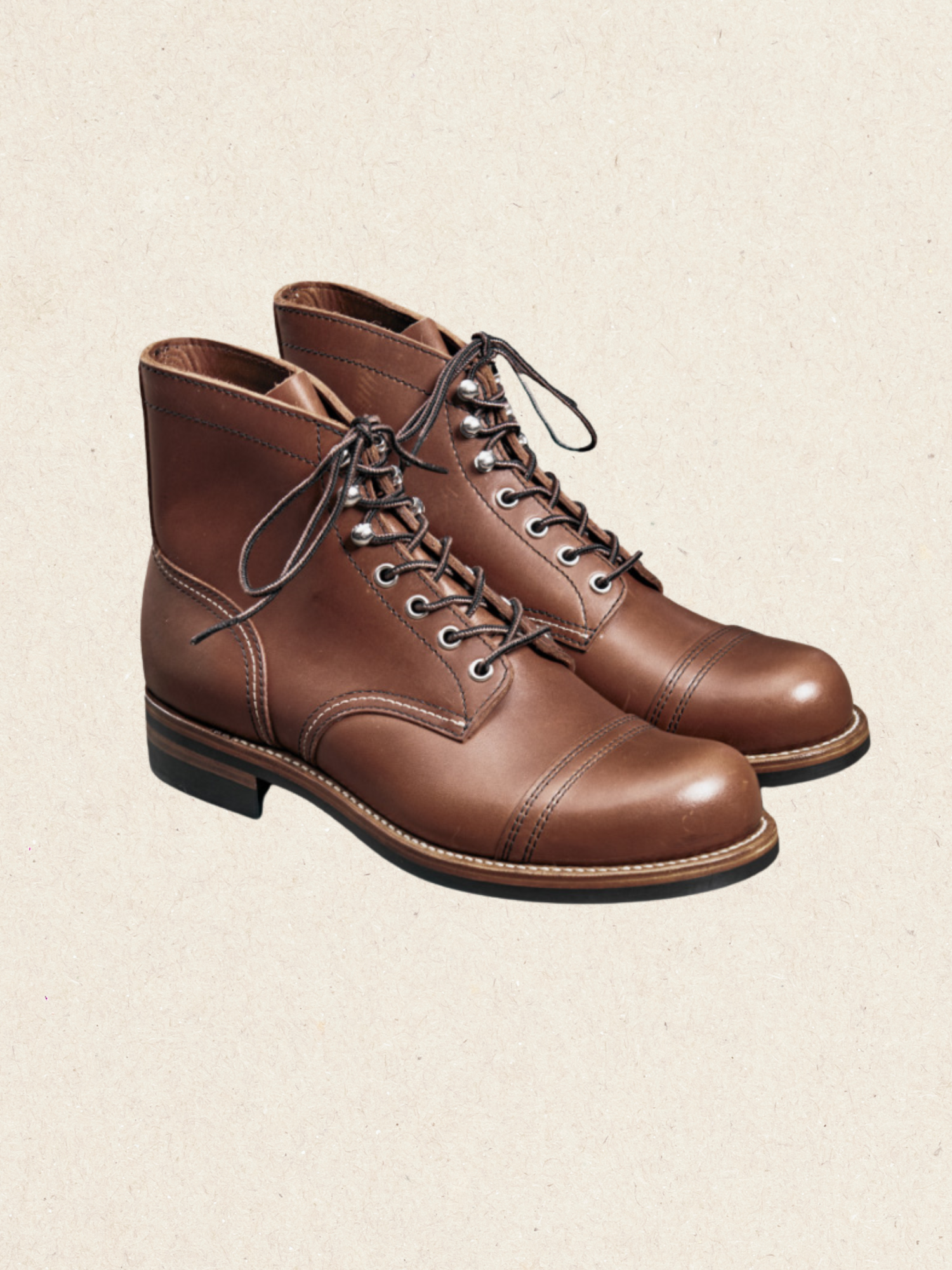
Centurion Moc Toe Boots
C.F. Stead Scout Boots
Paratrooper Heritage Work Boots
Trench Boots
👢 Engineer Boots:
Engineer boots typically have a high shaft and snug fit, especially around the instep, which can make break-in challenging for those with higher arches or wider feet.
Consider: Trying wide or EE-width models if available, or using a leather stretching spray to target tight spots. Patience is key with this style.
Example Engineer Boots:

Classic Engineer Boots
Tea-core Leather Engineer Boots
Heritage Engineer Boots
👔 Dress Shoes:
Dress shoes—like Oxfords or loafers—generally have softer leather and break in more quickly but require careful handling to maintain their sharp silhouette.
Tips: Use a shoehorn to avoid damaging the heel counter and start by wearing them indoors on carpeted floors to ease the leather into shape gently.
Example Dress Shoes:

Penny Loafers
UK01 Oxford Shoes Men
Embossed Oxford Shoes
VerseStride Brogue Dress Shoes
⚠️ Sizing Note: Keep in mind that leather boots often run larger than typical sneaker sizes, so it’s important to pick the right fit from the start. For detailed sizing advice, check out our comprehensive guide:
Boot Sizing 101: Why Your Sneakers Size Won’t Work for Leather Boots.

All our premium boots follow boot sizing standards, which generally means sizing up compared to your sneaker size for the best fit and comfort.
When to Seek Help or Exchange Size
Knowing when to seek assistance or exchange your boots for a different size is crucial for foot health and comfort.
-
If you experience persistent heel slippage, it means the boot is too big and not providing proper support.
-
Toe pinching or numbness are clear signs the boots are too tight or the last shape doesn’t match your foot.
-
If your leather shows no noticeable stretch or softening after multiple wears, the boots may simply be the wrong size or fit.
-
Remember, it’s always better to size up or down than to force your feet into uncomfortable boots and risk injury.
Don’t hesitate to contact customer support for advice or to arrange an exchange. Proper fit ensures your boots become a reliable daily companion, not a source of pain.
Final Thoughts: Good Boots Deserve a Gentle Start
Breaking in your leather boots is a process that requires patience and the right approach. When done correctly, your boots will mold to your feet comfortably, feeling like a second skin.
Starting with proper break-in and sizing practices not only ensures immediate comfort but also helps your boots last longer, maintaining their shape and support through years of wear.
For more detailed advice, be sure to check out our other resources:
-
Or reach out to our friendly Customer Support Team for personalized help.
Ready to find your perfect pair? Explore our premium selection of men’s boots here:
Hector Maden Men’s Boots Collection
Your journey to perfect boots starts here—take it one step at a time, and enjoy every mile.

